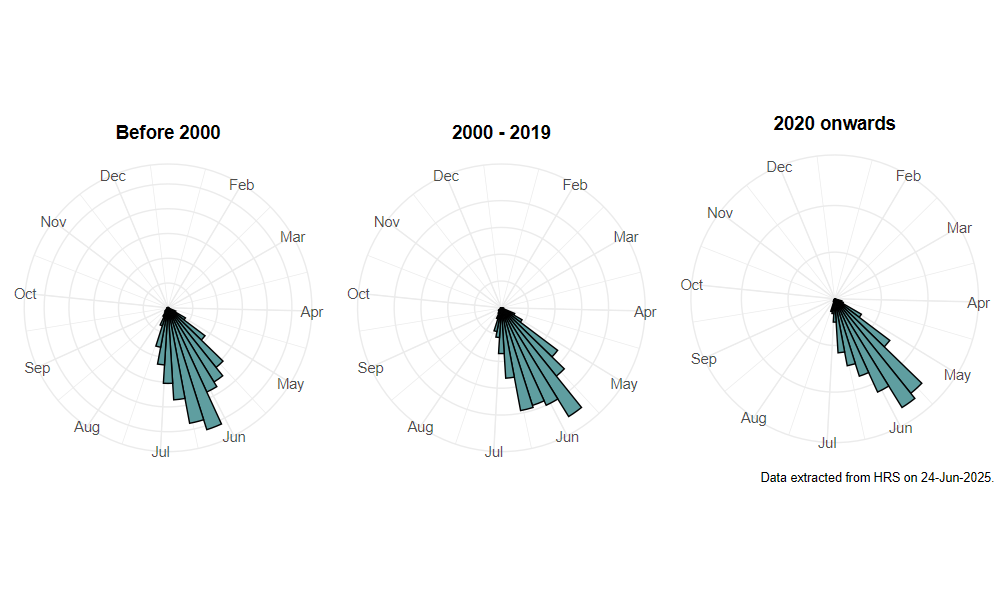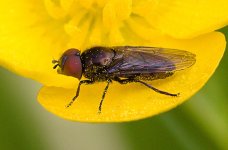Melanogaster hirtella (Loew, 1843)
Identification
Identification difficulty = 3. ![]()
![]() according to Ball & Morris, 20241
according to Ball & Morris, 20241
Synonymy
Chrysogaster hirtella (Loew) in Stubbs & Falk (1983)2.
Biology
The larva is aquatic, inhabiting mud adjacent to emergent plants such as Greater Reedmace Typha latifolia and Reed Sweet Grass Glyceria maxima, but especially favouring Marsh Marrigold Caltha palustris, usually at the edges of running water. It has modified hind spiracles which are used to gain access to the air spaces in the submerged parts of emergent plants. Found in marshes or near the margins of running water where there is lush emergent vegetation. Adults are usually swept from waterside vegetation or found visiting flowers, especially white umbels, and buttercups Ranunculus sp.
Flight period
The following plots show the number of unique records per week excluding those reported to be of immature stages.

Distribution
Widespread and common but apparently far less abundant east of the Pennines. This would conform to the analysis by Speight (2017)3 who reports this as an Atlantic seaboard species which is quite scarce in central and southern Europe.

Trends
The following plots show the Frescalo TFactor vs year and a map of the rescaled frequency (all records) for the species.
-
Ball, S., & Morris, R. (2024). Hoverflies of Britain and Ireland. WILDGuides (3rd ed.). Oxford: Princeton University Press. ↩
-
Stubbs, A., & Falk, S. (1983). British Hoverflies: An Illustrated Identification Guide (1st ed.). Reading: BENHS. ↩
-
Speight, M. (2017). Species accounts of European Syrphidae ( No. 97). yrph the Net, the database of European Syrphidae (Diptera) (p. 294). Dublin: Syrph the Net publications. Retrieved from https://pollinators.ie/wordpress/wp-content/uploads/2018/05/StN-2017-Species-Accounts.pdf ↩
